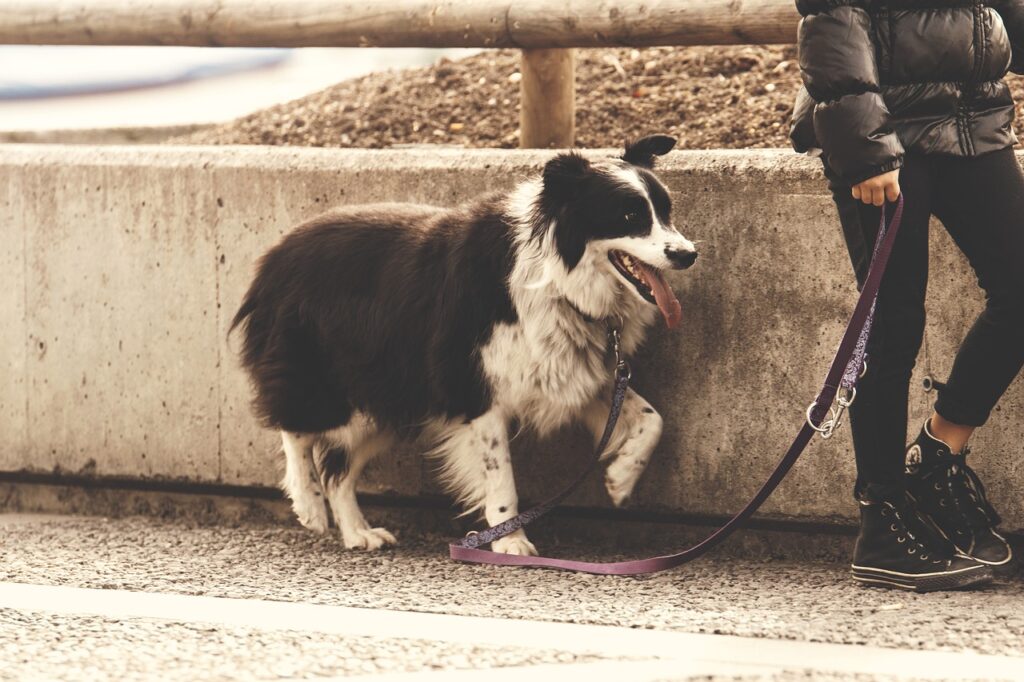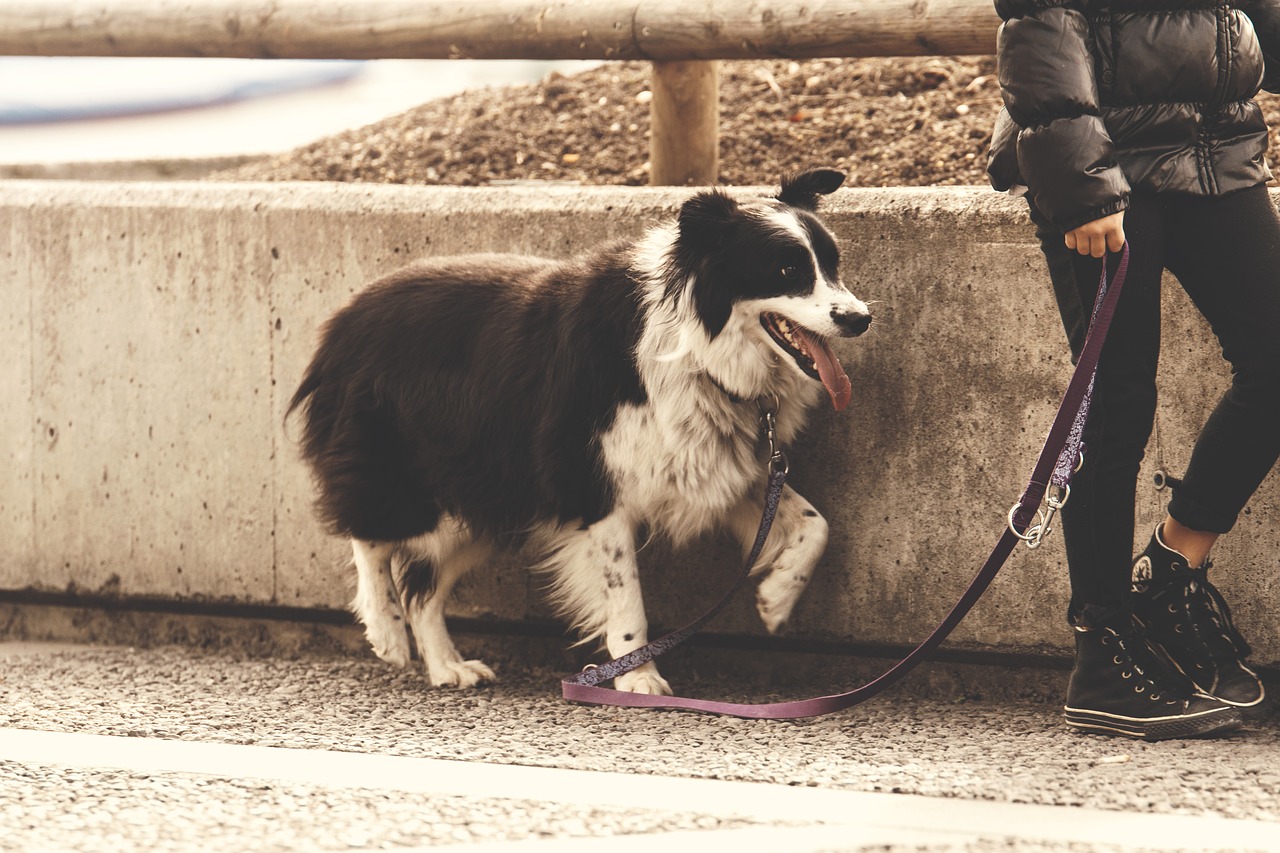A dog pulling on a leash is a bane of many dog owners. Although the advice books say to just stop as soon as the dog tightens the leash, in practice this often doesn’t work. Owners usually don’t have enough time and patience to stop every half step. Such a walk is a nightmare for both the owner and the increasingly frustrated dog. So is a loose leash possible? Of course! But the problem is a bit more complex than it seems.
Spis treści
Why does my dog pull on a leash?
First of all, it is worth answering the question of why a particular dog pulls. The reasons may be different for every dog. Out pet may be simply lacking some exercise, and pulling the leash is a way to do that or to release some energy and stress. The dog may also run away – from the environment which overwhelms it or even… nervous owner. Another reason is the walk itself. If we always go to the same park where we unhook our pet’s leash to run around, the pet has an interest in getting to its favorite spot as quickly as possible. Finally, some dogs are so engaged with their environment that tension on the leash is a small price for them to pay for the opportunity to explore their surroundings.
It is important to realize that teaching a dog how to walk on a loose leash is definitely more difficult than learning commands. It is easier to show a dog the behavior we expect than to tell it not to do something. The pet never knows how much freedom he has: we often change the length of the leash, sometimes we let him approach an interesting scent, and sometimes we rush and pull him away. When working on a loose leash, we stop when the dog tightens the line; when we let go or don’t have time to do so, we let the dog pull. A real misfit in the dog’s mind! What can we do to communicate to our pet what we mean?
Walking on a loose leash – how to teach your dog?
First of all: change the leash to a longer one. In urban conditions, 2-3 meters should be enough. In safe areas such as fields, forests or parks, you can walk your dog on a training rope – even 15 metres long. The rope should be attached to the harness, not to the collar – a sudden jerk of the neck when the dog breaks free or the rope catches on a tree branch may be dangerous. Many trainers believe that it’s a good idea to wear a harness on walks in the countryside and not require a loose leash or leg walk. A harness means that the animal is free and doesn’t have to control itself, while a collar is a signal that the dog should pay closer attention to its owner. Dogs actually distinguish these contexts very well, so it’s worth thinking about this solution. However, even with a collar and during a city walk, the dog must be able to freely explore its surroundings. Otherwise, he will get frustrated and start tightening the leash to sniff and explore, which is a natural behavior for him.

Another point is to teach your dog that being on a leash by his owner is fun! Let’s practice things with the buckled pet that are fun for him, such as following, jumping on obstacles, levelling at the leg, or carrying a toy in his mouth. Most dog owners go with their dogs to a specific place to train. There, they let the pet off leash or crossover to a rope, teaching them that fun and training come with freedom. We need to change this pattern. Let’s practice on a leash in different places: on a sidewalk, city square, small squares or parking lots. Our dog will quickly understand that despite being on a two-meter leash, he can expect to work and play, which will make him pay more attention to us. A large number of dogs start to walk close to their owner on their own, expecting that at any moment he can think of something fun to do.
Methods for teaching dogs to walk on a loose leash
But what to do when we put the above changes into practice and the dog happens to tighten the leash anyway? Better than “treeing” (standing as soon as the dog pulls) is turning around. Standing still allows the dog to pick up scents from its surroundings and look straight ahead, which is where it wants to go. The animal feels the tension and just waits until it can launch forward again in the direction it is interested in. Turning back is connected with a loss – the dog has to change the direction of walking and abandon the object of his interest (e.g. a tempting smell 5 meters away). It is possible that at first we will change the direction of walking many times and the neighbors will have fun watching our struggles! At a later stage, we can turn the dog around by pulling it slightly in our direction (if we have worked diligently at the previous stage, it should come back reflexively) and move on as soon as it takes a few steps in our direction. Our consequence will make the dog quickly learn that tightening the leash is not worth it. If we are in a hurry, let’s prevent pulling in a different way: let’s take the dog on a few-meter long leash or put on a harness (if we assume that we can pull on a leash).
Dog pulls on a leash – what to do?
An exemplary technique for learning to walk on a loose leash is shown by Robert Cabral, an American trainer and dog behavior specialist. The following videos show in an understandable way how we can practice with our pet.
In the video posted above, Robert Cabral recommends starting loose leash training with a 3-5 meter leash. If the dog tenses it, apply a gentle correction, turn the dog around and then continue walking in the desired direction. The dog does not have to walk beside us – it is important that he does not tighten the leash. Cabral demonstrates the method of turning back without saying a word and going another way when the dog pulls in a particular direction. Turning back must be abrupt, we are to disappear from the dog’s sight, not lead him. He also advises that we gradually reduce the length of the leash the dog has. If the dog bites the leash we loosen it so that there is no tension – we do not tug with it or pull it. If the leash in the dog’s mouth becomes uninteresting, the dog quickly lets go of it and attends to something else. We mark this by praising and giving a reward. The way the treat is given is also important – we want the dog to keep to our left. If we pull a treat out of our pocket with our right hand, we move it to our left hand to reward the dog. Rewarding from the right will cause the dog to step in front of us and overlap our path to take the food. Cabral shows that the proper leg position (as in obedience) can be achieved by holding the treat between the fingers of the left hand and allowing the dog to try to eat it. We hold the hand with the reward at the height of our hip, above the dog’s head, in such a way that the dog walks by our left side, not overtaking us or lagging behind. When we stop, the dog should sit.
In the second video, Robert Cabral uses the methods from the previous video, but shortens the leash to 1.5 meters. He points out that if the dog strains the leash, he is going to apply the correction as he has shown before. He also uses abrupt 180-degree turns over his right shoulder that force the dog to follow. According to the trainer, the phrases should also be done when our pet gets distracted, which makes it necessary for the pet to constantly pay attention to us. Another exercise Cabral demonstrates is walking with the dog in a circle while the pet is on our left. Walking to the right increases the speed of the dog, who must speed up to keep up with us. This is a good exercise for dogs that lag behind their owner. At first we make large circles, gradually getting smaller and smaller, until finally we stop and reward the dog when he sits down. Walking in a circle to the left makes the dog slow down, so this exercise is useful for dogs that like to get out in front of the owner. If the pet steps out in front of us, we block it gently with our knees. We also remember to praise the dog when it maintains the correct position. Cabral shows a way to teach a dog to sit automatically when we stop – stop, jerk the leash up briefly, and praise the dog enthusiastically as soon as it sits.
Walking on a loose leash – learning with a shorter leash
If your dog feels ok with you and shows no stress you can also teach your dog to walk on a loose leash using a 1.5-2.5 meter leash. You will read about it in the article Loose leash – one of the methods of teaching walking on a short leash.
Does your dog pull when he walks with someone else such as a child and not with you?
It is quite common for dogs that they go like clockwork with one family member and pull with another. There can be two reasons for this. The first is that the dog does not feel confident around the person who is leading him on the leash. He prefers to avoid him and be as far away as possible. This is often the case with a child who can tease the dog or a guardian who has a “firmer hand”. Paradoxically, the dog will then seem less obedient. The second reason is simply that the guardian requires less from the dog and the dog simply checks how much he can allow itself.
Is it worth using training tools to teach your dog to walk on a loose leash?
No tool can teach a dog to walk on a loose leash for us. Tools such as halters or easy-walk harnesses only mask the problem – they physically block the dog, but do not teach anything. When we put on a regular collar or harness, the dog will immediately go back to pulling. If the dog is physically stronger than us and its behavior on a leash poses a threat to us (because it can pull us into the street or knock us over), we can reach for such tools, but remember to constantly work on our relationship and obedience. Please note that the popular spike is not used to teach your dog to walk on a leash, and it is unethical to use it for this purpose. If you can’t manage your dog without it, seek help from a trainer.
- Daily dog’s food as a treat and reward - July 5, 2022
- How to teach the dog to walk on loose leash - June 15, 2022

